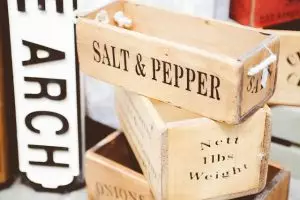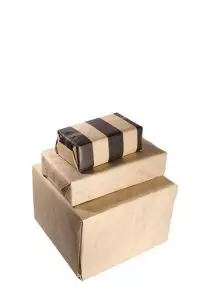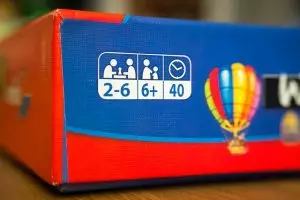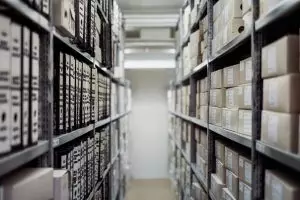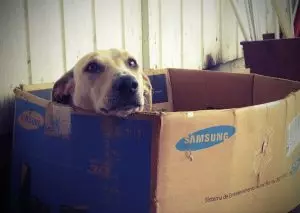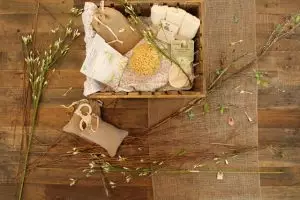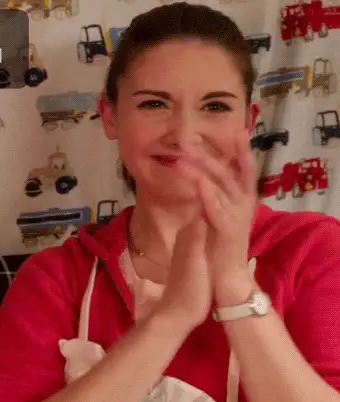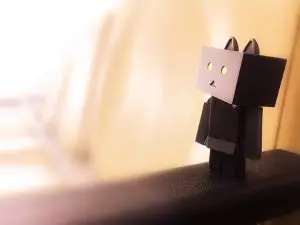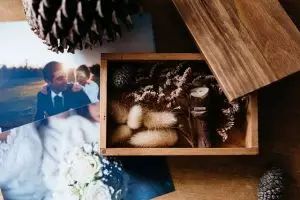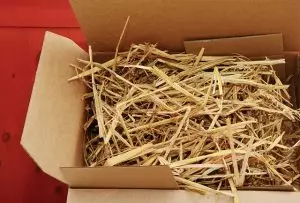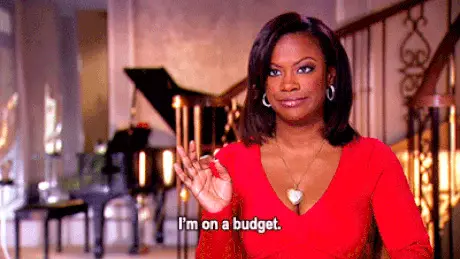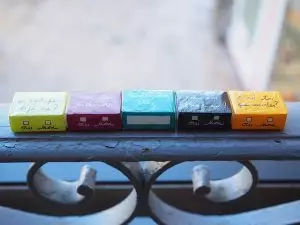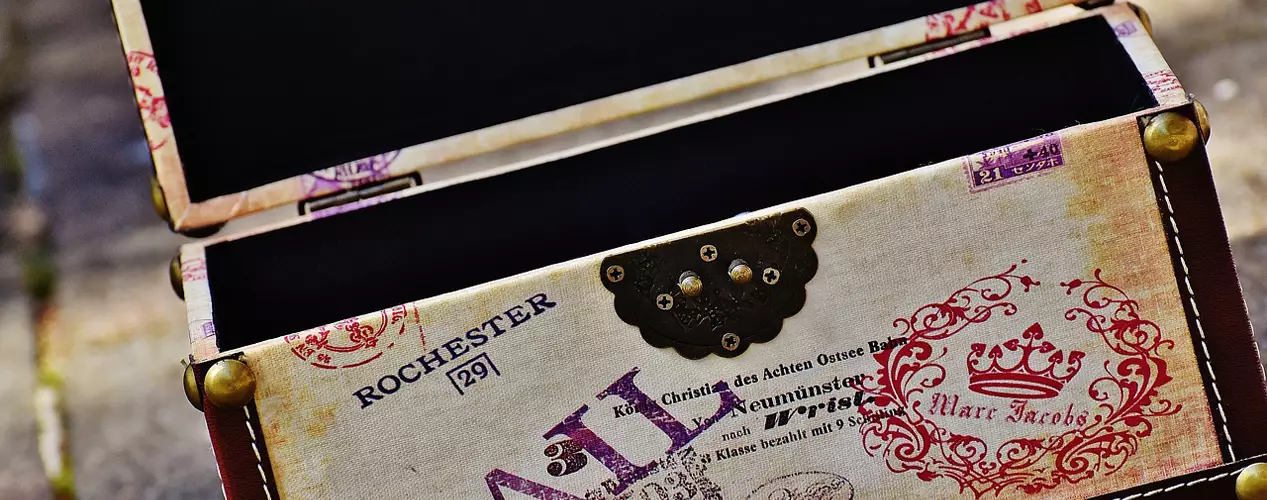
Getting into the subscription box business can be an exciting, rewarding, but quite a confusing journey. Many challenges can appear, such as choosing the right packaging that will make the subscribers jump, scream or faint (or preferably all three) from joy when they lay their eyes on the box. That’s how the experience of getting one’s favorite products straight to the doorstep should look or at least, feel like. And a well-branded, customer-friendly packaging can surely make this happen.
So, we went above and beyond to discover the best ways practices for custom packaging, covering topics such as:
- The basics of custom packaging
- When is the best time to invest in custom packaging
- Different types of materials for custom boxes
- Choosing the right size
- Creating a distinctive brand
- Designing your boxes
- Various printing options available
- Inner packaging and why it matters too
- Picking the right manufacturer
- Tips on pricing and saving
Now, fire up your entrepreneurial engines and dive into this ultimate guide to custom packaging, and learn how to make your subscription boxes as beautiful, practical and economic as they could be!
1. Basics of custom packaging
So, you’ve got a nice website, perfect business strategy, a heart full of love for your subscribers and your business up and running. Also, you have a pile of dull-looking, plain and boring boxes with only necessary information printed on the surface, waiting to be shipped to your eager customers. You’ll agree that it isn’t the best way to present a subscription company. Seems like going out for a date in your pajamas (no judging).
This is where the custom packaging comes to save the day (maybe not for your pajama date, but for your business!) It turns the dull, boring and plain into intriguing, fun and most importantly, promotional. Also, custom packaging with your particular design and messaging printed on it instils confidence in a company’s brand and gives it a more professional look. Luckily, there are different ways in which you could improve the entire experience of your excited subscribers.
To start, adding something as simple as a particular company’s information or a call to action (such as hashtags for subscribers to use on their social media channels or a place for them to visit) could significantly elevate your marketing game and position your brand in a more effective way. Custom packaging makes this possible, as it goes beyond the plain, boring appearance and adds an extra value to your business. The box becomes an extra tool for marketing and not just the carrier of the great products inside.
Now, the type of packaging you are going to use depends on various factors, such as the size, the material of your product(s) and how fragile it is. There are different kinds of custom packaging available, that could push your presentation from ‘blah’ to ‘wow’:
- Good ol’ box – for bigger products or many smaller products. This is the type of the box we see most often, with a well-known cardboard brown appearance. It is great for fragile goods, especially if the content is secured inside the box too. If you’re into vintage and eco, it will satisfy your needs as well.
- Good ol’ box with a twist – a little bit of creativity is always welcome, so if it fits in your budget and your vision, there are wooden boxes that look like crates (so your subscribers would enjoy the complete ‘I found the secret treasure’ experience) or oddly shaped boxes – dare to go beyond sharp edges!
- Padded or bubble mailer – this kind of package is suitable for smaller products, while preserving your goodies at the same time.
- Mailer box – these boxes are smaller (similar size as document envelopes), but they have square sides.
- Custom mailer envelope – regular, flexible mailing envelopes, making the recipients feel like they’re getting a love letter, and everyone loves that (even the people that deny it).
- Rigid envelope – these envelopes have a paperboard layer added to them, which makes them more rigid and durable.
As you can see, there are many different options available for you. Be creative and explore various shapes, colors and visual messages for your boxes, but remember to keep it smart and invest wisely (we’ll cover this segment onwards, as it is crucial for your subscription business).
When it comes to custom packaging, some questions are common in subscription business newbies – What is the best way to choose, organise and order the custom boxes? Do I really need custom packaging or could work a while without them – how will I know? What is the meaning of life? Let’s tackle them one by one, except that last one (sorry), until you become a real custom packaging pro.
2. When should you invest in custom packaging
The usual advice for new business owners get is ‘start smaller and then build from that.’ And yes, it is important indeed to start with whatever you have and invest bigger when there are enough subscribers and revenue. It does make sense, right?
Custom packaging is a significant investment, not only financially, but you’ll need to invest your time in developing it too. Time is money, but money can’t buy time (yet). So, put on your thinking cap now and ask yourself as a wise entrepreneur walking this planet:
Is this the good moment for me to invest in custom design or should I do it later on? Do I have enough money, time and resources to do it right?
We don’t wish to discourage you, just to remind you that you can easily get attracted and carried away by the loveliness of custom printing and packaging and how important (and consequential) these decisions are. Hence, in order to avoid costly errors, try to keep things simple until you reach 300, 400 subscribers per month. Use that time given to gain complete clarity of your brand, perfect the overall design and the messaging/unique voice for your company.
But, how can you keep the things simple and still avoid sending out the monotonous, plain boxes?
Good provisional solutions might include stickers (or custom stickers), labels, stamps or pre-designed colored boxes. These are not the fully professional-looking options for your branding, true, but they can serve as a temporary solution before you’re completely ready for printing. Who knows, with a little bit of creativity, maybe you could find your visual identity through them, with a distinctive stamp or color. But in any case, custom packaging gives you the ultimate freedom to present and advertise your company, so keep that in mind.
3. Different types of colors/materials for your box design
Congrats if your business is ready for custom packaging! It is a field of fun, creativity, and innovation and we’ll do our best to clarify all stages of the process, so you could enjoy it from the beginning until the shipping.
First, every package is made out of a certain material and it’s important to determine which one you need. We’ll cover the types of boxes here, because for all the other packaging options, such as mailers and envelopes, there is not much space for experimenting there.
So, the most common material for boxes is cardboard. No, sorry, silk or cashmere is not on this list, no matter how much we wanted it. There are three most common types of subscription boxes – Kraft, White and Kemi white boxes.
- The cheapest of them, Kraft (brown) material is probably the one you’ve seen the most, as it is the most common one used for subscription boxes. Kraft is perfect if you wish a ‘recycled’ look for your box. Kind of vintage and ‘using cardboard, but loving the environment’ style. Could be a good marketing move as well, if your target market loves the words such as ‘environment’ or ‘eco-friendly’ and states that a smoothie is not a mere juice, but an actual meal.
- The second option, White, is not as cheap as Kraft type, but when printed digitally, the nicer visual results can be achieved. As the name says, the surface of these boxes is white, which makes them convenient for printing. So, if you have an astonishing design that deserves to be shown in its full glory, this type might be excellent for you. There are also Oyster and Bleach white boxes, with slight differences – first one has the white color applied only to the surface of the outside liner and the second one is completely white on the outside liner.
- The third kind, Kemi White is also a type of white box (no kidding?!), but what is the difference then, except that it sounds nicer? Kemi boxes, also called ‘white top boards’, are for serious subbox players who have an amazing design and want those colours and shapes to stand out even more. Consider it an HD version of a regular white box. Kemi white provides a better printing surface to suit those needs.
As you can see, the particular type of box can satisfy some of your needs, but it comes with a price (as everything in life, actually). The first type, common brown Kraft, is the cheapest, but if you’re a visual perfectionist, it probably won’t satisfy your vision. The second, white kind, looks nicer when printed, but it costs more. And the latter, Kemi white is the prom queen of subscription boxes, also with a significant price attached to it.
In the following chapters, we will also cover some hacks and tricks on pricing and saving, so stay tuned and maybe you’ll find the way to make your boxes irresistibly pretty without emptying the pockets.
4. Choosing the right box size
We’ve got the materials covered, now let’s see how you can choose the right size for your subscription boxes. This step can significantly impact your budget, as you might spend more on a larger box size without the real need. Size matters here as well, that’s a cruel reality.
The common advice is to choose the smallest possible package for your products – if you know the exact quantity, weight and dimensions of the products, of course. This way, you are improving the preservation of your packed wonders (less tumbling, bumping and damage), but also, saving the precious $’s on the packaging material and shipping.
The size of your package can save you 100s or even 1000s of dollars, especially as the number of your subscribers rise (what we warmly wish for you).
To make it easier, there are a few questions for you to ask before deciding on the size of the box:
- What is the quantity of my usual products?
- How sensitive are my products and will I use the additional inner filling (calculate it when deciding on the box size)?
- What is the weight of the usual package?
- How much money should I invest in packaging now, or can I afford to leave some free space in the box, to avoid ordering again if my product offer enlarges?
- What are the exact dimensions of my products?
- What is the meaning of life? (This one just keeps on intruding, ignore it.)
The size of your box directly influences the shipping costs, remember that. By the way, the most effective option for shipping is USPS cubic shipping – it is not based on the weight of your package, but its volume (less valuable for you if your products are lightweight, though).
If your package weighs less than 16 ounces, it could classify at First Class mail, and keep in mind that this leads to better shipping rates. Remember, just a few inches can make a difference in the cubic size, which can dramatically influence the final shipping bill. Play it smart, Pedro – and if that is not your name, either way, play it smart.
5. Creating a distinctive brand
The subscription box industry is on the rise, with more and more competition appearing every day. From books and games, food and cosmetics and even pet accessories, people are embracing the possibilities of consistent deliveries of goodies at their door. After all, it’s an easy, fun and affordable way to enjoy the products they love or try out new products every month.
Now, with the growing subbox offer out there, how can a newbie distinguish themselves in the market? Is there a way to stand out from this sea of subscription businesses? Without the pictures of naked ladies on the packages, no matter how tempting it might sound.
The answer might be hiding in the individuality of your company – making your brand unique, memorable, something that people can connect with and eagerly expect to see at their doorstep regularly. You can start by asking which ‘style of voice’ is best aligned with the products you’re offering – personal, funny, influential or all three?
This is why you should rethink your branding before spending a dime on design – the best branding practices rely on the adjustment of the entire visual and communication experience. Once your story, message or a core idea is integrated into your packaging (aka the opportunity for you to connect with the subscribers and keep them on your list), it will make the marketing easy and the entire experience more enjoyable for everyone involved. This step is not easy, I know, but it’s important. Maybe not as important as cat gifs or chocolate, but it is important.
6. Design for subscription boxes
Once you’ve determined what kind of box you need, starting from the budget, material and size and how your branding looks like, it’s time to create some eye-catching, mouth-watering designs.
Keep the dimensions of your box in mind when creating the design, and try to adjust them accordingly. Also, the material you have chosen should be tuned with the design. The interesting part is that the base color of your box is also a color (brown, white or something else if you’re using the pre-colored boxes), so adding just an another color or two to complement it could look nice enough. You don’t need to use the entire rainbow, unless your products are Nyan Cat related, of course.
When it comes to actual designing and editing, you can either tackle this challenge yourself or hire a designer on platforms like Freelancer, DesignCrowd or Upwork to work their magic. When choosing the right person for this job, aim for professionals with proven experience in similar tasks, as designing subscription boxes takes a specific set of skills.
As an example, one should avoid small fonts, take into account that the choice of colors and call to action placement is extremely important and always remember to consult with your manufacturer along the way, as the design may change when the actual boxes are produced.
Some general guidelines for custom packaging design are:
- Keep the material and the exact size of your boxes in mind when creating the design
- If you do not feel confident in your designing knowledge, consider hiring a professional, experienced in similar challenges
- Consult with your manufacturer as the PDF design might differ from an actual printed product
- Try to merge the design with your branding, messaging and style
- Never stop contemplating on the meaning of life (can someone please show the door to this tiny philosopher, thank you?)
- Don’t be afraid to experiment, but try to keep the design as simple and straightforward as possible
- Clearly point out your logo, particular call to action and further information for the subscriber
- Add some mystery, humor or individuality into the design – something as simple as a symbol or a color choice could make your boxes noticeable (and trendy).
Your target audience is the crucial element that should point you in the right designing direction. If your perfect customer is a child (parents, to be exact), then focus on a brightly colored, cheerful and educational style for your subscription boxes. If you’re shipping male-oriented products, probably it would be good to focus on darker, more masculine and testosterone-driven design. Whatever you do, you do it for your subscribers and their enjoyment – make a small note with this quote and carry it around with you all the time. You’re welcome.
7. Printing options – pros and cons
Your design is ready, it looks so wonderful that your heart is racing and you can’t wait to make your subscribers sigh in awe when they see it! But wait, what is the best way to transfer that goodness onto the box itself? What kind of printing methods there are? Do you need to draw the design on each and every box (hopefully not)?
There are three main printing methods you can use for custom packaging:
-
- The most common one is flexographic printing. With this printing method, your design is stamped onto the boxes, but in order to create the printing plate, there are some related costs. The printing plate costs around $1000 per piece, but the prices vary (depending on the manufacturer and the country you’re in, etc). Remember that tip to keep things as simple as possible when it comes to design? Well, you need a unique plate for every color, so having 3 or more colors could make a significant change in the budget.
- For smaller sized orders, digital printing is a good solution. This type of printing is similar to how the standard laser printers work – directly applying the design ink to the box (without a plate as a connector). The downside is that this kind of printing is 3-5 times more costly than the first, flexographic print. The upside is that it requires smaller minimum orders (flexographic requires much more).
- Lithographic or litho printing method gives a clean, high-resolution result, as its process is bit more complicated – a litho printing is placed on a paper sheet, where it’s processed and cut, then merged with a box. Complicated indeed, but still not as complicated as drawing on the boxes yourself.When it comes to the price, it is more expensive than flexographic print, but at a larger quantity of boxes it costs nearly the same. The visual result, however, is significantly better with litho printing.
As you can see, the digital printing is fine if your order is not too big, but for 1000 or more boxes, it is better to pick either flexographic or lithographic printing. Flexographic is still the cheapest option, but if you wish a cleaner, more professional, high-resolution effect, than doing the bigger quantities with litho might be a good choice.
It all depends on your preference, budget and overall calculations (for an example, if you saved a lot by strategically picking the box size, maybe you could invest a bit more into a better appearance, either with a white material or a printing method). Invest wisely, but keep in mind that the way your box looks can have an immense impact on your business, so try to think both realistically and ahead of time.
8. Inner packaging
This is the part that many subscription merchants tend to overlook, but we won’t let you make that mistake. The packaging goes beyond the box, because what is inside and how your products are protected and presented are just as important.
Here are some tips you could use to improve your subscriber’s experience, inside and out:
- Play with the inner dividers to make the box as user-friendly as possible and your products nicely arranged
- Use the filling – either paper or bubble wrap or whichever you are using, as an extension of your design (think of color matching, associations such as a grass-resembling paper for vegan products and similar)
- Consider adding a personal note from the merchant (yes, yourself), wishing a nice day to the customer
- Same as always, keep it simple, nice and fun.
9. Picking the manufacturer
Bit by bit, we get to the point where all our efforts might pay off or, well, not. Choosing the right manufacturer is a critical step in your custom packaging journey. We already mentioned that including the manufacturer’s feedback in the design process might be helpful, so make sure you choose wisely.
The first thing to consider is how close your manufacturer is to you – the closer, the better. This way, you can check on your packaging process easily. Plus, you could also be rewarded with some reduced shipping costs.
Try to gain an insight into the previous merchant’s experiences with a manufacturer, as they might provide information on what to focus on and who to avoid.
Before you go into negotiations, it’s important to know the specific size and quantity you’ll need. Also, be careful of ridiculously low-priced offers, as they might reduce the inner and outer liner or provide poor quality.
Another thing to consider is a turn-around time and to include the problematics into your negotiations as well. Try to determine the general time needed for the entire manufacturing process.
Consider useful resources such as this one too, as they can provide help with designing and downloading the 3Dc model of your box. They can also help with online ordering, printing, and shipping the package.
10. Tips on pricing and saving
We already covered many money-saving tips during the article, so let’s sum them all up and add some more useful advice on how to play the subscription business game the smart way.
- As mentioned, the type of printing matters – litho and digital print methods are more costly, but it could be lower with bigger orders. Flexographic is the cheapest option, but the downside is that it’s not as good-looking as digital or litho.
- The box material is also important for your budget, as white boxes generally cost more than common, brown ones (Kraft vs Kemi is the most common packaging battle). Also, ink quality might make a difference too.
- Keep your manufacturer informed about the design options and other packaging dilemmas, those opinions can be very helpful.
- Consider the effects of smaller or bigger quantities on your final ordering bill. You can make better rates with the increased volume, in general.
- Use the possibilities of online resources to the maximum, to find out the best prices and where to make the best purchases – try Amazon, eBay or Walmart. You can find shipping materials at good prices over there, but again, be sure of what exactly are you looking for.
- Purchase in bulk if you can to save even more money. Every $ you save could be invested in the improvement of your business (or that well-deserved cup of coffee).
- Use the best of recycling, whether the bubble wraps, bags, or envelopes. Just make sure they are in good condition. Consider the new materials made from recycled ones too.
- Can you take advantage of free shipping supplies? Think about the free flat rate boxes for Priority Mail that USPS offers or some free items that FedEx and UPS are offering for free. Maybe you can use these possibilities somehow.
- Sales or promotions can be found if you register on websites such as OfficeMax or OfficeDepot. Sometimes they offer coupons for boxing tapes and similar shipping supplies.
- Is there really a need for boxes as a packaging choice for your products? Consider other, smaller and probably cheaper options such as mailer boxes, rigid envelopes and similar options (mentioned in the first part of this article).
Closing words
Wow, are you feeling like a custom packaging god? You should, just look at everything you learned – starting from the basics of custom packaging and when to invest in it, across the topics of materials, size, branding, design, printing, inner packaging, the smart know-how on picking the manufacturer and finally – how to save money through it all.
With a little tear in the eye, it’s time to move on, read more about these topics (find many useful links in the list below) and ask – do you have any more questions for us? Do not hesitate to ask and stay in touch!
Resources for further reading
- The pros and cons of custom printing boxes on white corrugated board | Salazar Packaging and other posts from their blog are insightful
- Kemi – making custom printed shipping box | Green Packaging Group
- Custom packaging for subscription boxes | Morgan Chaney blog
- Packly – custom packaging resource
- 5 quick tips how subscription based companies can save on packaging | Kable Fulfillment
- What to consider when creating packaging for your subscription box | Kable Fulfillment
- A guide to custom subscription box packaging | Subbly
- Move further with custom packaging solutions | Subbly
- Custom packaging for subscription boxes | KorPack
- Litho box printing versus direct printing | Custom Boxes Now
- A lot of interesting tips here – eCommerce shipping boxes – Custom Boxes Now
- Costs and benefits of custom packaging | Shorr
- 3 tips for better subscription box packaging | Pack Design
- 5 designs we love: Subscription box packaging | Work Design Group
Signup & Try Subbly For Free
Subbly – the purpose built platform for starting and growing subscription businesses


